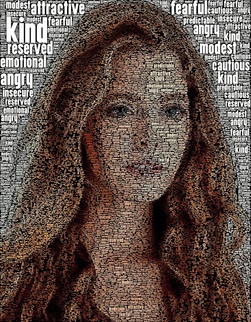 Sarah McIntyre - Unseen Dominion Series
Sarah McIntyre - Unseen Dominion Series So how does one go about creating jump-off-the-page characters? I’ll admit, I am not a recognized expert on the subject. I haven’t been writing best sellers for decades. But, I am a student of people and I believe that is key to creating realistic characters. When we attempt to describe someone, our first instinct is to address physical characteristics—tall, short, lanky, not, blond, curly, bald, blue-eyed, green skin, fangs, talons, on and on and on. While these can be important to help the reader establish a frame of reference, just a little detail will allow the reader’s imagination to fill in the rest.
More important are the personality, past experiences, and goals of the individual. While these won’t necessarily make their way directly into the story, they shape everything about the character—how they dress, walk, talk, think, react, solve problems, and relate to other characters. If a writer doesn’t work through the details of a character’s personality, past, and plans, the characters will begin to look and act an awful lot like the author. Let’s face it, most of us just aren’t that interesting.
I’ve personally found that the ability to flesh out the details of my characters is helped by studying people. This involves more than just watching people to see how they act, though I certainly do enough of that. It means reading about people. How do introverts and extroverts differ? How do creativity and logic shape a person’s responses? I read an article earlier this week which looked at autistic traits in IT personnel. How might someone over-sensitive to sounds or smells respond in my story? Or, how might someone under-sensitive to touch play out as my antagonist?
There are hundreds of ways that studying what makes us unique can enhance a writer’s ability to create relatable characters. But, I’ll leave you with one more that came to me today. As I read an article about what your Facebook posts say about your personality, I began to ponder, “what would the Facebook or Twitter posts of my characters look like?” One more unique way of adding dimension to those flat characters that first step onto the page.
‘Till next time!


 RSS Feed
RSS Feed